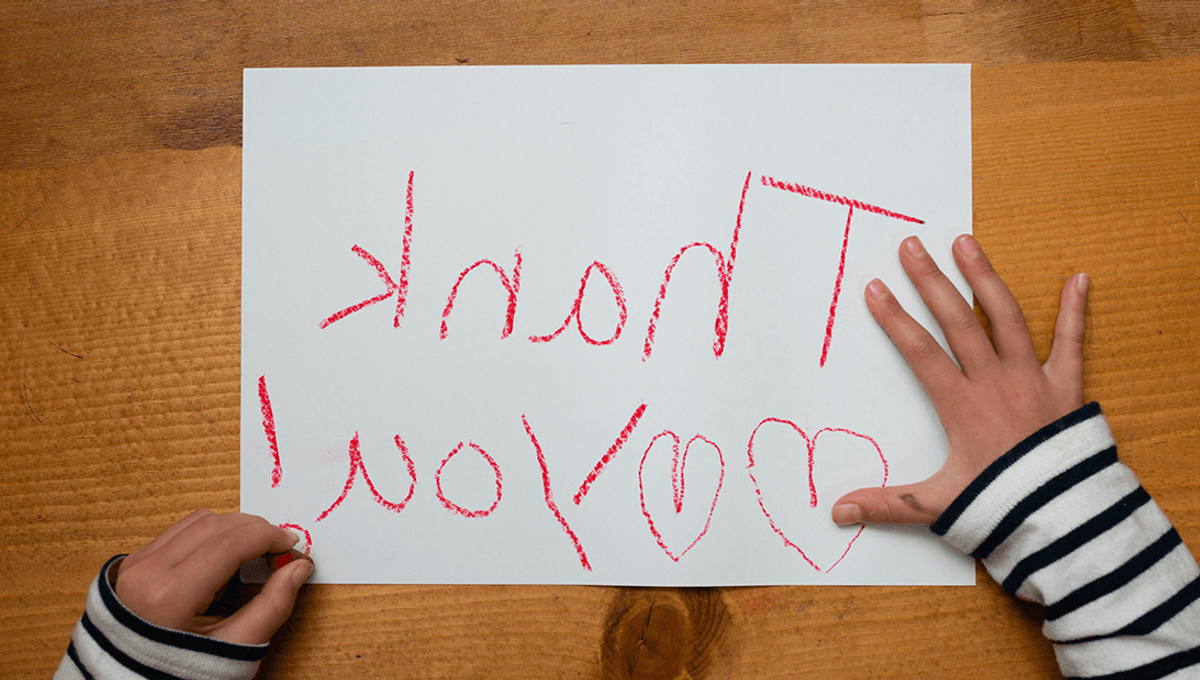
If you’ve ever raised a child and watched them learn to read and write, you may notice that they can tend to get jumbled up with their letters, sometimes writing letters or words backwards, rather than in the usual direction.
Known as “mirror writing”, the first thing you should know is likely that there is nothing to worry about. Though it can be a common phenomenon in children with dyslexia, mirrored writing does not mean that a child has this learning difficulty.
“Backwards writing and reversals of letters and words are common in the early stages of writing development among dyslexic and non-dyslexic children alike,” the University of Michigan’s Dyslexia Help website explains.
“Dyslexic children have problems in naming letters (i.e., remembering and quickly accessing the letter names), but not necessarily in copying them. Because many people erroneously, and incorrectly, believe that letter reversals define dyslexia, the children who do not make letter reversals often go undiagnosed.”
In children up until around the age of 7, it is common to reverse the letters b, d, q, p, and the numbers 9, 5, and 7, while some may write whole words or even sentences in mirror writing. It can happen in left and right-handed children, and there are a number of ideas as to why it happens.
One idea is that children have “brain blindness” to orientation of letters. Most objects we see in nature are not sensitive to orientation. An apple looks like an apple whether it is flipped in a mirror or not. But symbols of our invention are sensitive to rotation and reversal, and this is something that needs to be learned.
“The remarkable ‘brain blindness’ to letter orientation in children is consistent with the view that letter perception begins developmentally with visual processes that are orientation insensitive,” a paper on the topic explains.
“Reading is a relatively new evolutionary skill, likely relying on object recognition abilities. Whereas object recognition is tuned to recognize objects regardless of mirror translations, this trait of the object recognition system is disadvantageous for reading. The observation that children often make reversal mistakes (not realizing letters have a correct orientation) provides ecological evidence that acquiring this skill utilizes, in some part, components of the object recognition system. Part of becoming a skilled reader involves understanding and establishing representations of letters that are orientation specific.”
Another idea is that the problem arises from confusion between the two hemispheres of the brain.
“In Corballis’ theory, the mirror-image storage is achieved through the process of interhemispheric mirror-image reversal as a result of homotopic connections between the hemispheres,” a paper explains. “By this process, each hemisphere perceives correctly, for example, the symbol b, but in the memory storage process, the representation of b is transferred and reversed between hemispheres.”
One more idea blames the memory, and the shape of the letters themselves.
“Model 3 of letter orientation in the direction of writing starts with the observation that children have few problems copying the characters, but the process of memorization erases the character orientations,” the paper continues. “Because of the resulting un-oriented representation of the characters, the children must choose an orientation when writing characters from memory. Then, the model adds a somewhat original idea: the characters themselves, rather than certain characteristics of the children (e.g., left-handedness), explain the reversal.”
In this model, when choosing which way to orient the letters and numbers, the letter shape of the characters plays a role. Left-orientated characters – for example 1, 2, 3, 7, and 9, and the capital letters J and Z – are more often miswritten, as children adopt a rule of orientating the characters in the direction of writing (in this case, left to right).
While each model has their merits, it remains a debated open question, and will be the subject of further research.
Source Link: Mirror Writing: Why Do So Many Children Write Backwards?